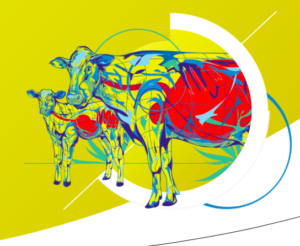Nowadays, the whole world is talking about sustainability. Many efforts aim to maintain our world for future generations, creating a balance between our current needs and those of our children, grandchildren, and great-grandchildren. The right animal nutrition choices play a crucial role in achieving the challenging aim of sustainable animal production.
Greenhouse gases emitted by livestock, responsible for about 10% of global greenhouse emissions, are increasing rapidly on our planet. Livestock releases methane through microorganisms that are involved in the animal digestion process, and nitrous oxide through the decomposition of manure. Doctor Dario Caro and Professor Simone Bastianoni of the Ecodynamics group of the University of Siena, in collaboration with Professors Ken Caldeira (Stanford University) and Steven Davis (University of California) have estimated the greenhouse gas emissions due to 11 types of cattle, related to 237 nations and released in the last half of the century, finding that globally from 1961 to 2010, these emissions increased by 51%.
74% of world emissions are caused by cattle. This is mainly due to the abundance of dairy cows but also the large amount of methane and nitrous oxide emitted by beef cattle compared to other animals. Sheep contribute 9%, buffaloes 7%, pigs 5% and goats 4%.
The need for protein for human nutrition is too important to be able to solve the problem by abandoning the farm.
Modern farming takes care of the welfare of animals and the entire planet by promoting sustainable farms where environmental hygiene, the health of livestock and their nutrition is at the center of scientific development.
The grazing animal’s bucolic image fills us the spirit, but this type of breeding uses too much green land, not always available and this type of feed develops digestive processes that increase gas emission.
Often, especially in African countries, not only are green fields available, but water is not available in the necessary quantity and hygienic conditions. The best way to coordinate human needs, greenhouse gases, is relying on science and technology … which is not always the monster that is painted.
Romano Pisciotti




